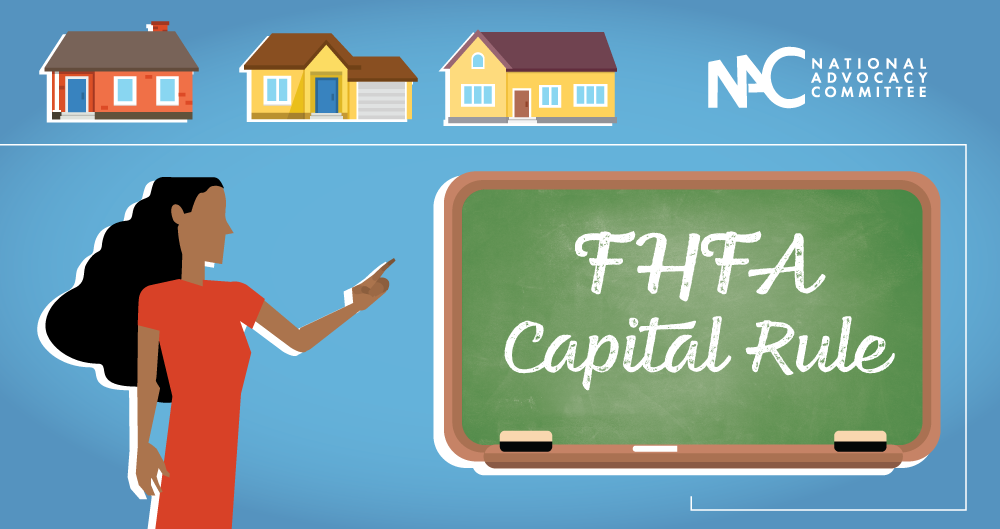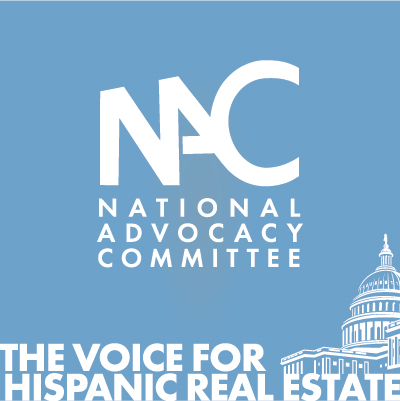Proposed FHFA capital rule could mean more expensive loans
Celebrating NAHREP familia, cultura, politics, and grassroots action
Que onda mi gente?!
Can you believe we are officially halfway through 2020? The past six months have to break a record for jamming through the most history-making events in the shortest amount of time. Maybe that’s why my “canas” have multiplied like we’re on a Back to the Future time machine cruising at the speed of light. Ok, back to housing, because you know, that’s our bread and butter.
Despite COVID-19, an official recession, a civil rights movement, and a presidential election, housing agencies are still issuing major rules that have the potential to have massive consequences for our businesses and our mission to advance sustainable Hispanic homeownership. These changes can easily get buried with everything else going on, but staying informed is part of our job.

FHFA Capital Rule: major rule on the horizon that we have to be “woke” about
On May 20th, 2020 the Federal Housing Finance Agency (FHFA), the agency that regulates Fannie Mae and Freddie Mac, issued a notice of proposed rulemaking called the FHFA Capital Rule. This rule would require the Government Sponsored Enterprises (GSEs), aka Fannie and Freddie, to dramatically increase their capital requirements in order to make the enterprises more attractive to investors. I know it sounds wonky but this “wonky rule” could have serious implications on access to affordable loan options for clients.
The proposal is very complicated and we only have 60 days to review it.
The rule is 424 pages long and FHFA has given us a 60-day comment period, the minimum amount of time allowed by law. NAHREP has joined other industry and consumer groups in urging FHFA to extend this comment period to 120 days in order to get the analysis it deserves. I asked Laurie Goodman at Urban Institute if they’re going to be doing a study on how the rule impacts communities of color. She let me know they’ve started to work on it, but they aren’t sure if a meaningful analysis of this complex rule can be completed and written within 60 days. That’s just not right. We need more time!
What does the FHFA Capital Rule do?
The purpose of the rule is to get the GSE’s (Fannie Mae and Freddie Mac) ready to exit conservatorship (or release them from Federal Government oversight) and become publically traded companies in the future. This proposal is essentially a privatization proposal.
Did you know? Under the oversight of the government (conservatorship), Freddie Mac and Fannie Mae hold less capital than banks do. Because of their conservatorship, the two entities also borrow from the U.S. Treasury at rates lower than what is available to banks.
The privatization proposal would require Freddie Mac and Fannie Mae to raise roughly $240 billion in capital in order match that of other financial institutions.
Why should we care?
- Almost half of all mortgages will be effected, more than half for Latino families. The GSEs own approximately 45 percent of all single-family mortgages. In 2018, 57.6 % of Latinos purchased their home through conventional financing.
- The new rule will likely make GSE loans more expensive. The GSEs will need to increase loan fees they charge to lenders (aka G-fees) by approximately 10 basis points. These fees would likely be passed along to the borrowers in the form of higher costs and interest rates, by at least a quarter of a percent.
- First-time homebuyers and borrowers of color could suffer. The GSEs will need to reduce risk (when they speak of risk, let’s be real, they’re talking about loans to communities of color), possibly requiring significantly higher credit scores for the mortgages they secure. Steeper requirements would push more first-time homebuyers toward more expensive loans.
- Fewer mortgage products will be available. Some of the language in the rule indicates the GSEs wouldn’t be able to secure products like cash-out refinances or loans to second homes. Another possibility is that the enterprises would need to lower their conforming limits, or maximum loan amounts. This would be particularly problematic for Latinos who tend to live in high-cost areas.
And this is just the beginning. Many in the housing community are concerned by this rule and we only have 60 days to fully flesh it out and understand it before comment period is over. Not to alarm everyone, but you know, BE ALARMED!
We’ll keep you posted. NAHREP will be inviting a few experts to talk through the complexities of this rule and how we can fight it. Until then, stay woke mi gente, because often your business and NAHREP’s mission depend on it.

About Noerena Limón
Noerena Limón is NAHREP’s Executive Vice President of Public Policy and Industry Relations. Noerena heads the organization’s policy and advocacy efforts on issues ranging from homeownership, housing inventory, credit access and immigration.
Prior to joining NAHREP, Noerena spent six years at the Consumer Financial Protection Bureau (CFPB) and served as a political appointee under President Obama in the White House Office of Political Affairs.



